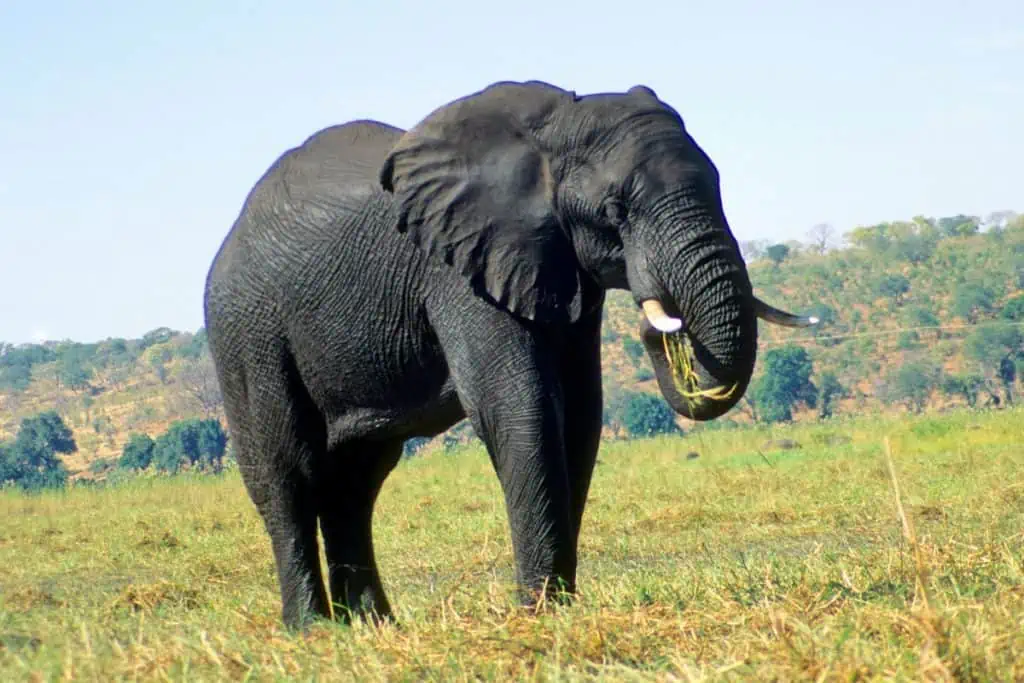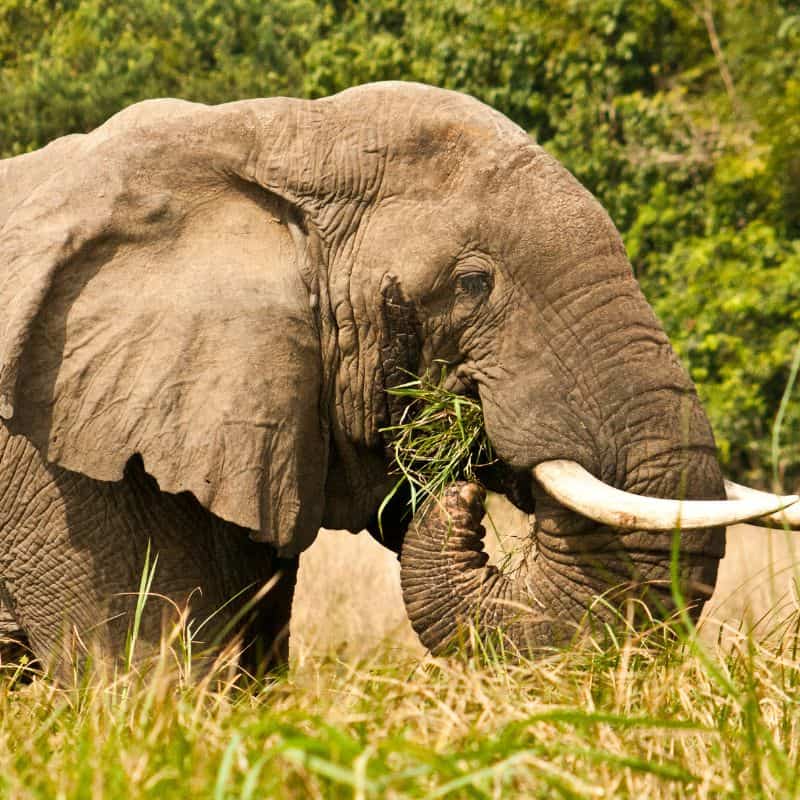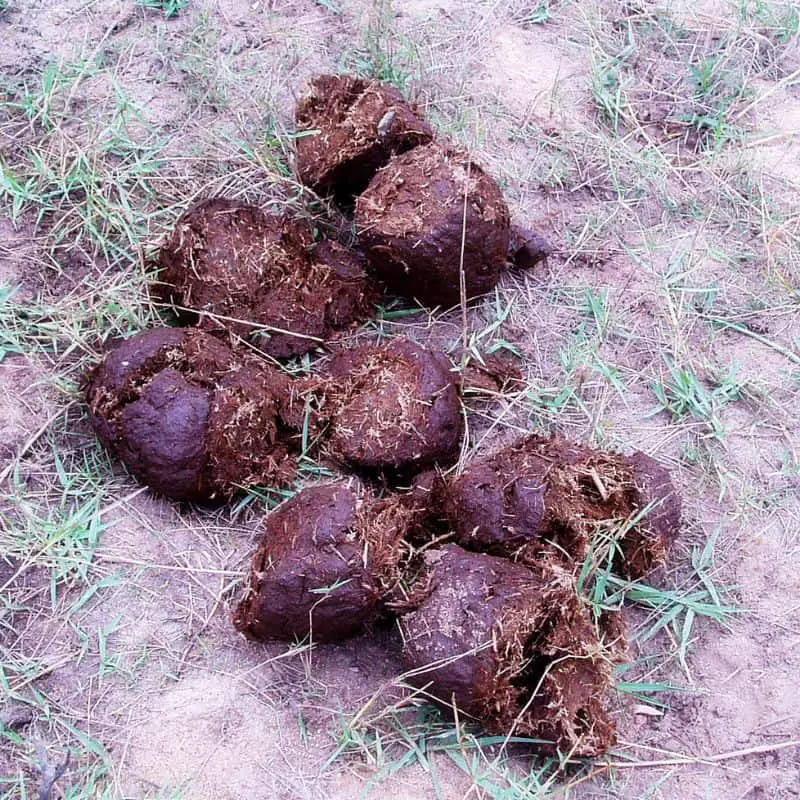Elephants are the largest land animals on the planet and are known for their big appetites. With such a large appetite, they also have a special digestive system to maintain their immense weight. How many stomachs does an elephant have, and how do they digest their food then?
Elephants have one stomach that has multiple chambers within it. These stomachs look like cylinders and serve as food storage areas. The stomach chambers cooperate to decompose their fibrous food, unlike humans and other animals, who only have one primary stomach chamber.
The reality is that an elephant doesn’t have several stomachs; instead, its primary stomach is split into several sections. This article will explore the elephant’s anatomy and clarify the critical functions of an elephant’s stomach.

An Elephant Stomach and Its Features
The structure of an elephant’s digestive system has slight differences from other mammals, particularly in their stomach, intestines, and overall size.
The other essential parts used in digestion, such as the pancreas and liver, are larger.
Let’s look at the intricate working of an Elephant’s stomach, which is vital for this super-species. The stomach is divided into four compartments as follows.
Rumen – The First Compartment
The rumen is the opening section of the elephant’s stomach. It is a massive sieve, collecting all the waste and vast pieces of leaves, shrubs, and twigs it consumes.
Because it enables the elephant to graze and gather as much feed as possible at once, it is beneficial. The rumen’s contents are challenging to digest.
Thus, it stays there for approximately 3 hours before getting reabsorbed.
Reticulum – The Second Compartment
The reticulum is the elephant’s second stomach chamber.
The meal is compressed into a ball by the reticulum, a tiny pouch.
Elephants are ruminating animals; hence the reticulum performs a valuable role.
Omasum – The Third Compartment
The omasum is the third section of the elephant’s stomach.
The omasum is a blood vessel-filled membrane that is very fragile.
The blood vessels aid in absorbing water and nutrients as semi-digested food passes through them.

Abomasum – The Fourth Compartment
The abomasum is the elephant’s fourth stomach chamber. Like a human stomach, the abomasum is where digestion is finished, and nutrients are circulated.
Because it resembles the human stomach in anatomy, the abomasum is occasionally referred to as the true stomach. Before food enters the small intestine, it is entirely digested by enzymes in this area.
The majority of nutritional absorption occurs in the small intestine. An adult elephant’s intestine is coil-shaped and roughly 20 feet long.
Interesting Fact: Elephants may consume up to 300 pounds of food daily– so their digestive systems must be incredibly effective to ensure they get all the necessary nourishment.
The Digestive System of an Elephant
Elephants’ digestion differs from that of other animals, not just because of their vast food consumption. They digest food far slower than people and other animals do.
An elephant’s stomach is a gigantic pouch that stores food and gradually digests it. The mouth, also known as the Ower, is the entrance by which food enters the stomach. The gastric outlet is the hole through which food leaves the stomach.
Food will then remain in the rumen (first digestion chamber) for up to 24 hours in an elephant’s stomach. This is due to the food’s high fiber content, which swells and makes the stomach feel full.
The meal moves from the rumen to the reticulum (second chamber), where it is dissolved into minute particles, and then to the omasum (third compartment), which is combined with additional saliva and digestive fluids for further digestion.
Instead of moving water, as in a washing machine, the stomach muscles propel food along the digestive tract. This aids in breaking down the meal so the elephant can stomach it more easily. The meal turns into liquid after being mashed up.
Following absorption through the omasum’s wall, the food goes to the abomasum (the fourth chamber), which combines enzymes and acids before continuing through the intestines for total digestion.
The digestive process will last between 36 and 48 hours.
Why Is an Elephant’s Stomach Important?
The stomach is an integral part of the elephant’s digestive system and stores food for later.
Since an elephant’s diet only comprises vegetation, the stomach has to function effectively with the help of fermentative digestion through active bacteria.
This process happens when the large and small intestines join at the giant sacculated caecum (the beginning of the colon.) The caecum’s thin and vascular walls absorb the digestive product into the bloodstream.
The rest of the digestion material passes through, and the intestine’s sole purpose is to absorb the water and consolidate the feces.
Even though elephants eat a lot of vegetation, not all of it is broken down during digestion.
As the beans or seeds pass through relatively untouched, it benefits other living insects like dung beetles or birds. This is also how elephants are a part of a continuous life cycle for various other living species.
Given the size of an elephant’s stomach and the high functioning of small and large intestines, these animals can digest their food quickly. This means, relative to their bodies, they eat much less frequently and absorb all the nutrients and vitamins that can be obtained through food.
However, if the stomach were any smaller, it would be complicated for elephants to eat all the food. They would’ve required more frequent meals and other different eating habits.

Final Thoughts on How Many Stomachs Does an Elephant Have
The huge fellas with big ears and trunks have massive compartmentalized stomachs – not necessarily a surprise because it’s evident that those massive bodies need enormous organs to survive and sustain.
The elephant stomach is a work of nature as it’s strong enough to digest tonnes of a plant-based diet in a few hours.
FAQs
Is Elephant Dung Useful?
Elephant dung may have multiple uses in the commercial arena. For instance, it can be used as a fertilizer, fuel, or building material. This substance can be found on various continents. Its unique properties make it a valuable resource for the locals.
Do Any Animals Have Two Stomachs?
Animals with two stomachs are cattle like sheep, goats, buffalo, camels, alpacas, etc. These animals are a part of ruminant species. Camelids like alpacas, camels, and llamas have a fiber digestion process similar to that of elephants with a multi-compartment stomach.
